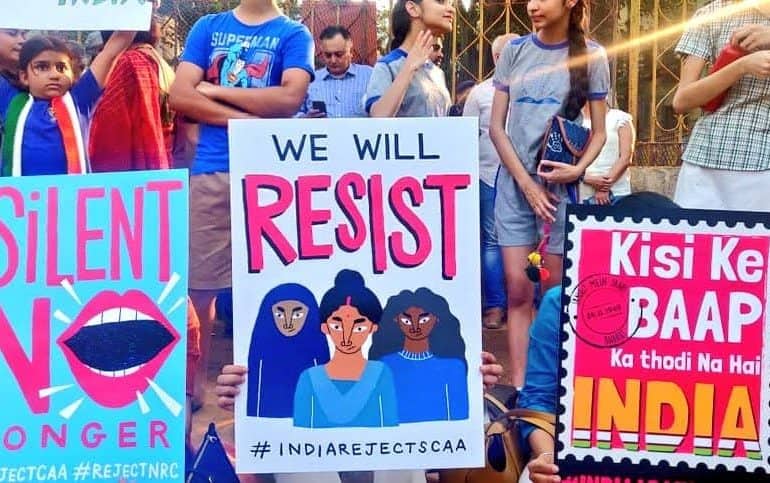Students’ protests are often categorised as violent, disruptive, misdirected, politically motivated, and even ‘anti-national’. Let’s try to dissect why such co-relations and myths burn several minds.
Early in the morning of 19th December, I went to my college in South Delhi. The journey was tattered with hints of the ongoing unrest. While interchanging the metro at Rajiv Chowk, I heard the announcement that Vishwavidyalaya and Chandni Chowk Metro Stations have been closed off, moments later Twitter pinged with the Delhi Metro Rail Corporation notification of three more metro stations being closed on Magenta line due to security reasons. An hour later, after I had safely reached my destination, my phone rang. My mother on the other side of the phone, panic-striken, was rapidly asking about my whereabouts and safety protocols, asking for my friend’s number, saying, “Bache shaitaani kar rahe hain sadko par.”
This anecdote symbolises all that is wrong with inherent instincts against the idea of students on the street. It portrays the relationship between a wide protest and a household, where the unconditionally loving parents want their kids safe, away from political drama, and locked up in the world of academic drudgery. And hence, it also justifies denouncing the students who do come on the streets, as misdirected, fed false information, and politically provoked.
However, this utter belief of students just joining protest for fun and not knowing about the cause also comes from a place of highly charged political propaganda prevailing around the protest culture. The idea of students partaking in ‘anti-national’ sloganeering, provoking riots, vandalising public property, and enabling communal tensions is aggravated by large political bodies propagating these very ideas through doctored videos and cultural machinery of using have-have nots language. This might be the reason why the police didn’t deter from entering and brutally assaulting students in Jamia Millia Islamia campus, assuming the favoured and natured stance that it is intrinsic of student protestors to indulge in unlawful practices. The same was the reason cited by the many supporters of Delhi Police who reduced the act of violence as cautionary measure.
However, the fact is that it takes money and muscle power to turn any protests violent, which can be propagated by either sides of the coin to sustain their ideas. It is categorically and fundamentally difficult to believe that any student protestor, with minimal resource could indulge in violence. Hence, the onus of violent protests remains onto the large-dynamic parties with easy access and motives. Despite this, the blame comes onto the educated, politically and socially aware students, as they are the ones who become pawns in the game. Therefore, when students of Jawaharlal Nehru University came on the streets a few weeks ago, the whole-wide world went batshit crazy, not focusing on the facts, but just that students are yet-again raising their voices.
This then motivates suppression of voice, paranoid, and resilience. The State, to avoid the aforementioned ‘damage of public property and security reasons’, suppress protests that might cause socio-political unrest. Suspension of metro-internet services, denying protest-permits hours before protest, and detaining protesters even before march had begun were the means to achieve disbandment of the 19th December protest. While, the students on the other hand, imagining the worst, had started sharing legal aid contacts and ‘steps-to-follow-if-you-are-detained’ stories for awareness, signifying the instinctual fear associated with going to protests. The paranoia of being misheard, misrepresented, and misused to incite communal or social fire also remains with texts of ‘How-to-identify-miscreants-in-the-crowd’ also being circulated rigorously, to ensure that their peaceful protest for a cause doesn’t become a stepping stone for any forms of misheard communal hatred and violence.
It is in instinctually wrong for students or their parents to be scared of protests. It is not even about Freedom of Speech, but rather the idea of a Democratic Republic where safe and peaceful protests don’t translate into students’ childishness or lack of political awareness but rather, are heard as an appeal of Justice, Rights, and Liberty.
Despite constantly hoping for protests to be perceived as perpetually propelling positivity, the harsh reality is that asking for any form of ‘aazadi’ and ‘freedom’ is going to be a politically charged statement and not a critique of democracy, and therefore, the students on the streets are always going to be ‘shaitaan’ and ‘troublemakers’ and not student leaders fighting for themselves.
Featured Image Credits: The Wire
Sakshi Arora




Comments are closed.